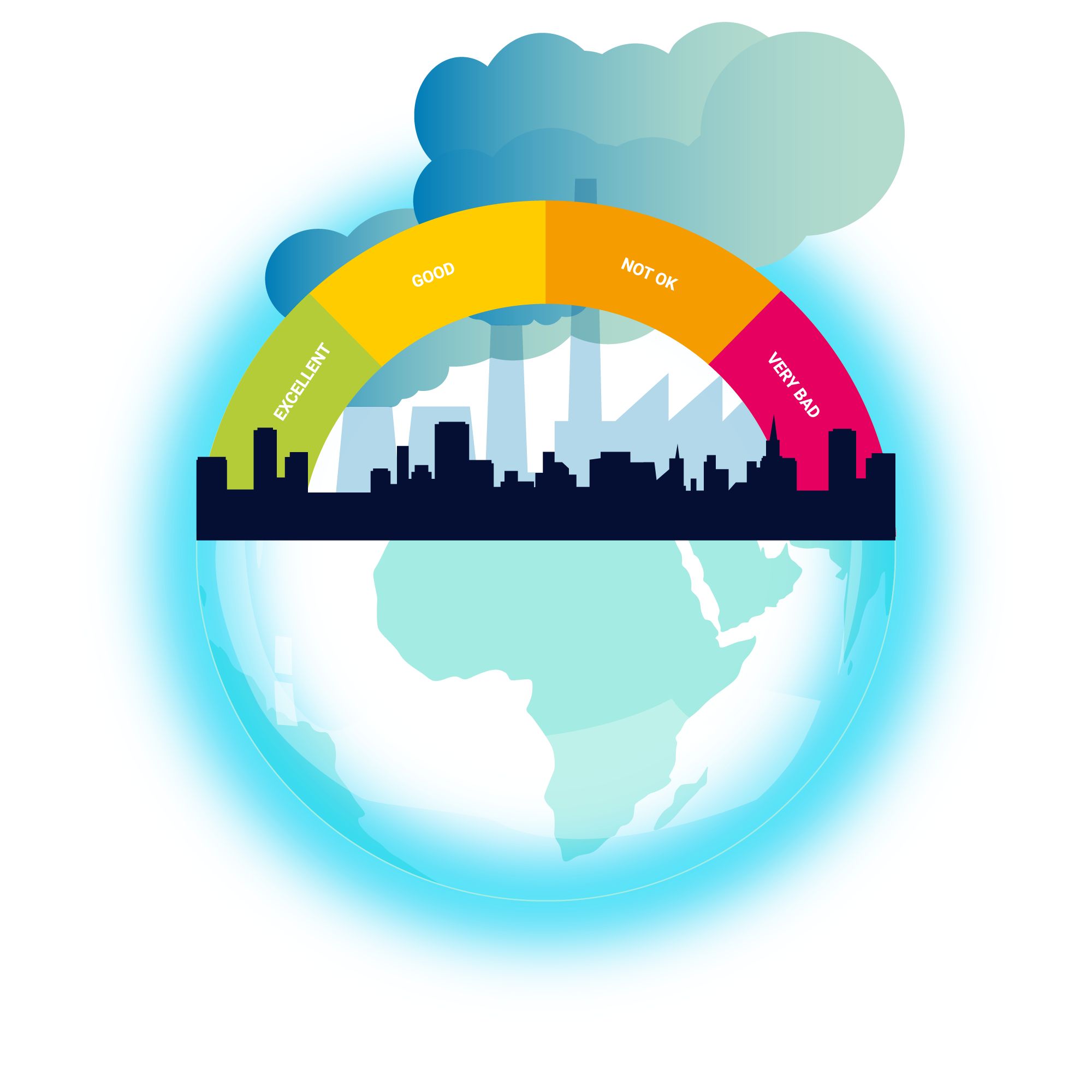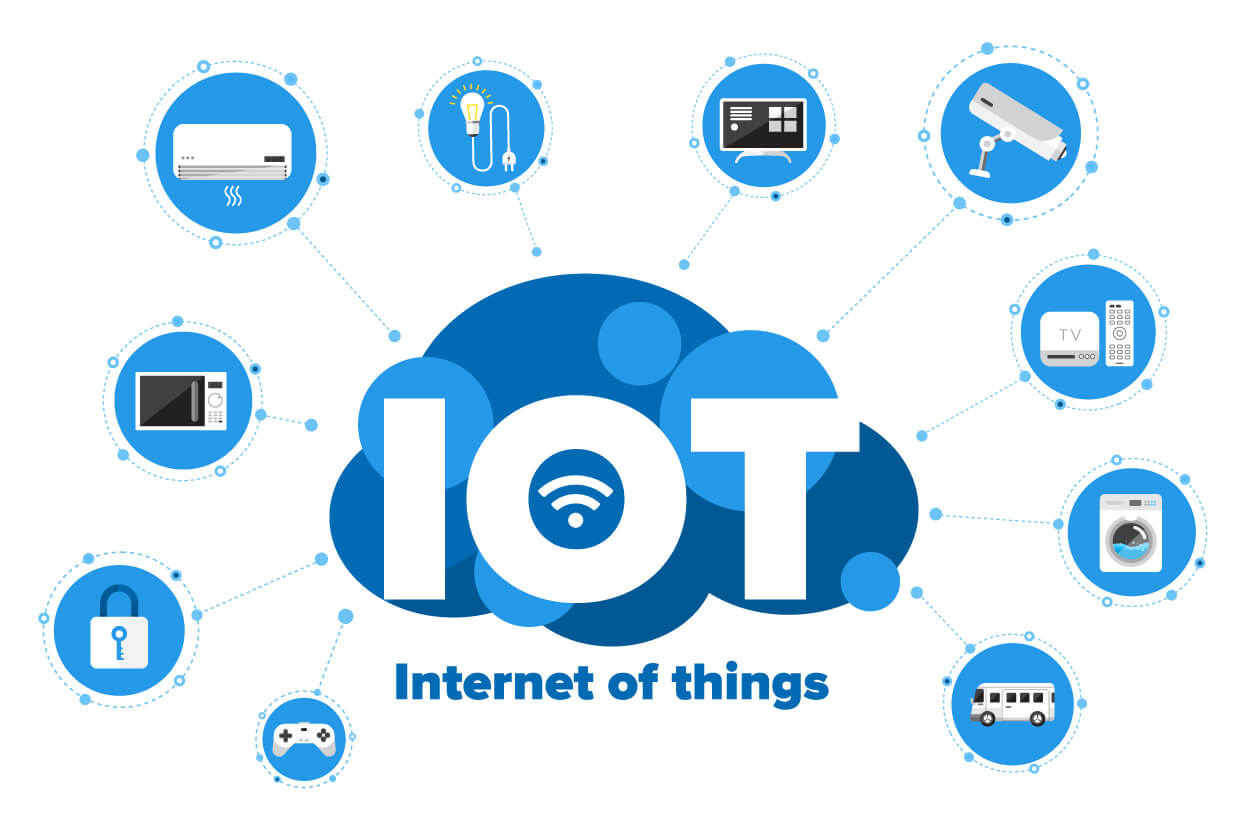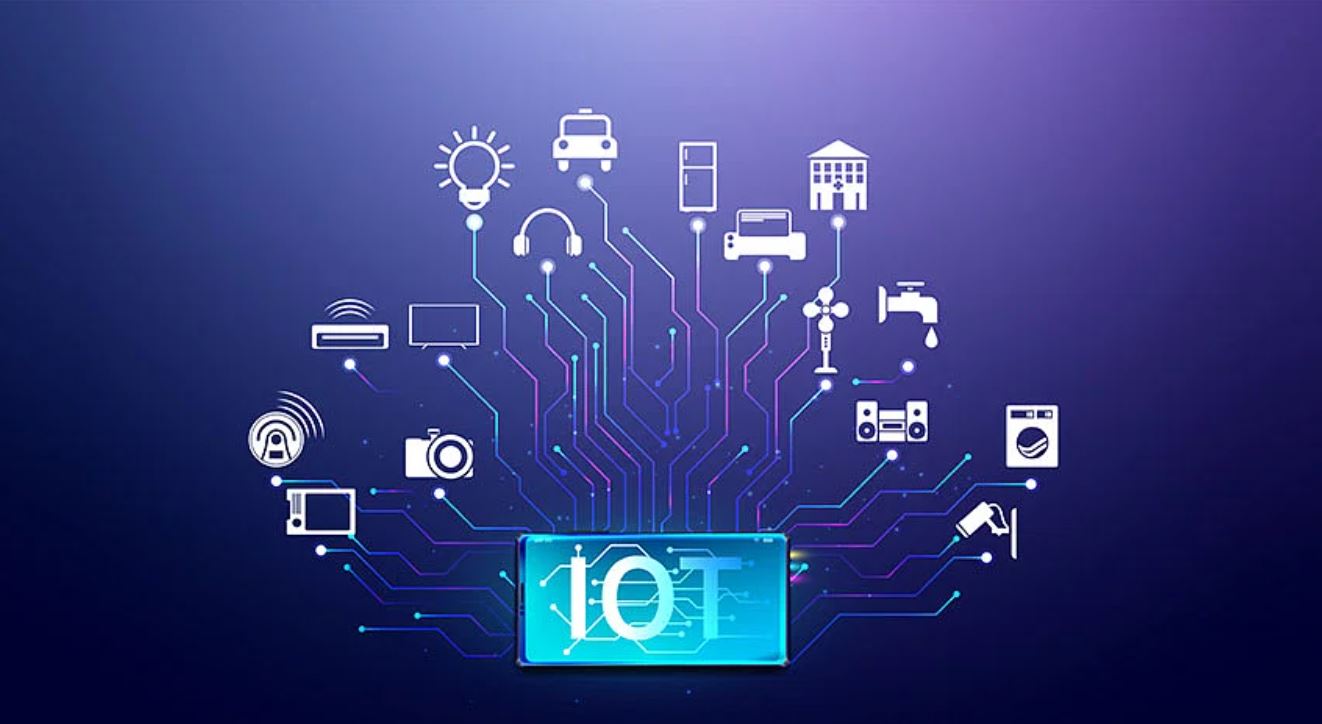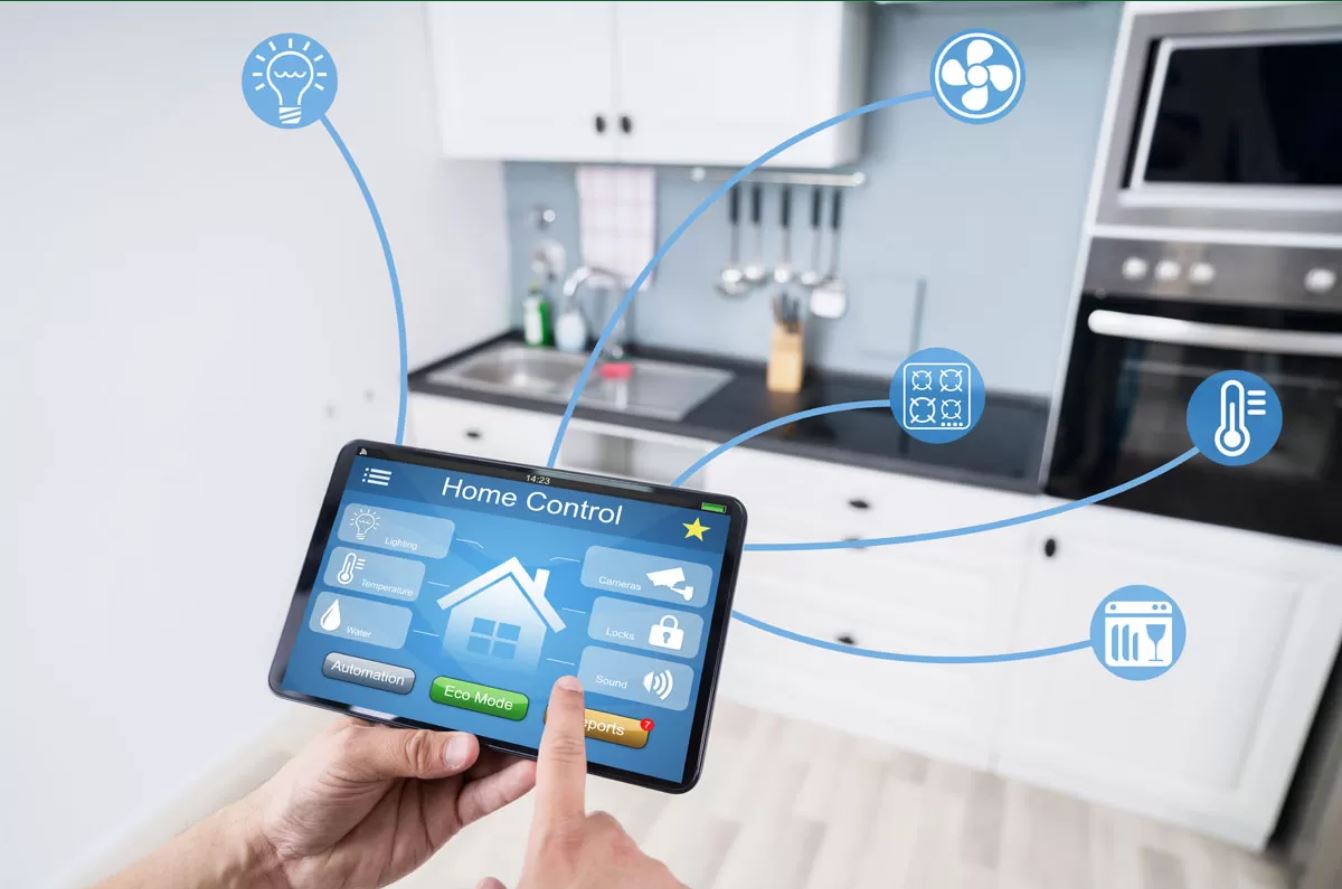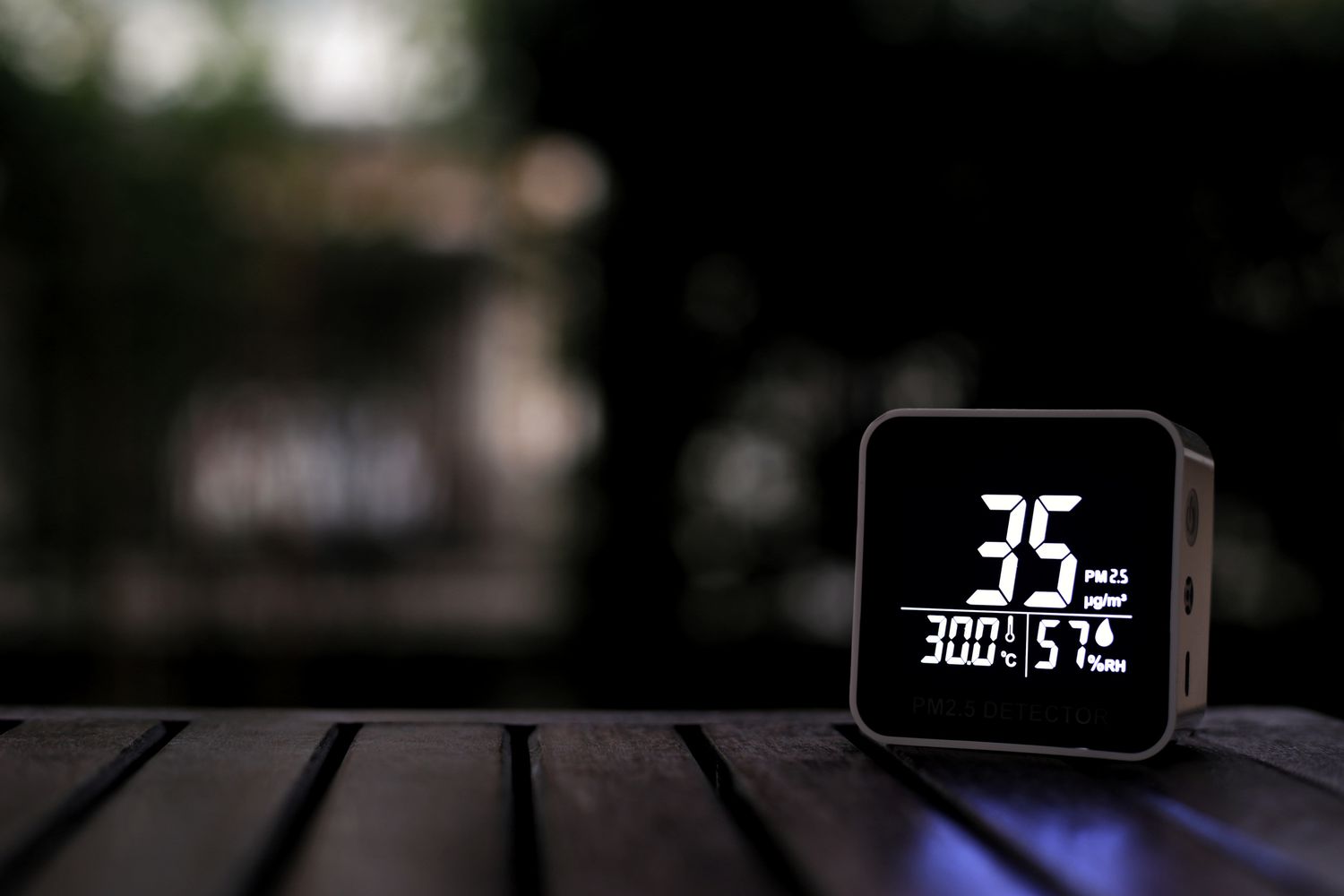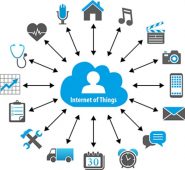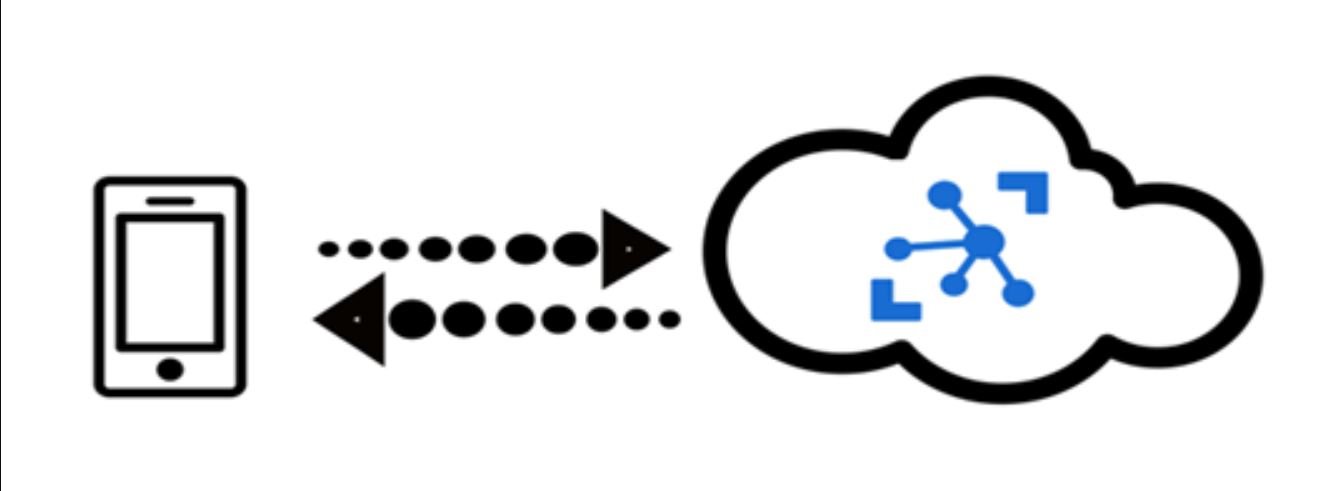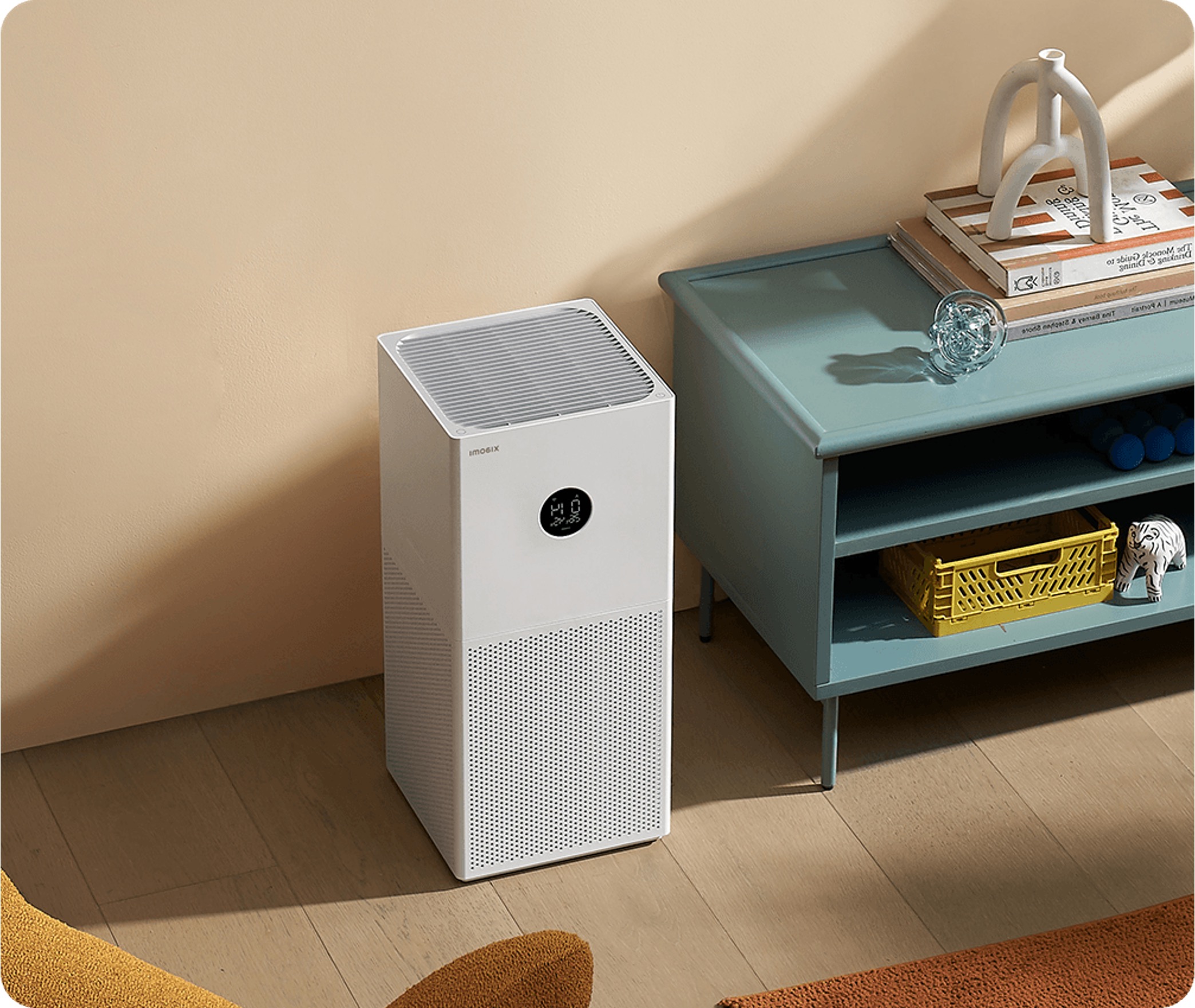Introduction
Welcome to the world of IoT-based air pollution monitoring, where technology meets environmental consciousness. With the increasing concerns about the deteriorating air quality and its adverse effects on human health and the environment, it has become crucial to develop effective monitoring systems to track and analyze air pollution levels. The Internet of Things (IoT) has emerged as a promising solution by enabling real-time monitoring and analysis of air quality data.
IoT refers to a network of interconnected physical devices, vehicles, buildings, and other items embedded with sensors, software, and connectivity, allowing them to collect and exchange data. This technology has the potential to revolutionize various industries, including environmental monitoring. By harnessing IoT, we can create a network of smart devices to monitor and manage air pollution levels seamlessly.
Air pollution, caused by the release of harmful gases and particles into the atmosphere, has significant consequences for human health, climate change, and ecosystems. Exposure to high levels of air pollution can lead to respiratory problems, cardiovascular diseases, and even premature death. Additionally, air pollution contributes to global warming and harms natural habitats, wildlife, and vegetation.
Given the magnitude of these problems, the importance of monitoring air pollution cannot be overstated. Traditional air quality monitoring systems, although effective, are often expensive, limited in scope, and not easily accessible to the general public. This is where IoT-based air pollution monitoring comes into play.
IoT-based air pollution monitoring systems utilize a network of sensors that measure various pollutants in real-time. These sensors are embedded in strategic locations, such as roadsides, industrial areas, and public spaces, to ensure comprehensive coverage. The collected data, including pollutant concentrations, temperature, and humidity, is analyzed and visualized to provide insights into air quality trends and alert individuals and authorities about potential health risks.
The components of an IoT-based air pollution monitoring system typically include sensors, data collection devices, connectivity modules, and data analysis platforms. These systems can also be integrated with existing urban infrastructure, such as streetlights and traffic signals, to create a smart city ecosystem that effectively manages air quality.
In this article, we will delve deeper into the components and working of IoT-based air pollution monitoring systems, explore the sensors used for data collection, and discuss the benefits and challenges associated with this technology. So, let’s embark on a journey to discover how IoT is transforming air pollution monitoring and paving the way for a cleaner and healthier future.
What Is IoT?
The Internet of Things (IoT) is a revolutionary technology that has rapidly gained popularity in recent years. It refers to a network of physical devices, vehicles, buildings, and other objects embedded with sensors, software, and connectivity, enabling them to collect and exchange data. These devices can communicate with each other and with humans, creating a seamless and interconnected system.
At its core, IoT is about leveraging the power of data and connectivity to make our lives easier, more efficient, and more convenient. By connecting everyday objects to the internet, IoT enables us to remotely monitor and control them, gather valuable insights, and automate tasks. From smart homes and wearable devices to industrial machinery and smart cities, IoT has the potential to transform various aspects of our lives.
The key elements of IoT are the devices or “things” themselves, which are equipped with sensors to collect data. These sensors can measure a wide range of parameters, including temperature, humidity, light intensity, motion, and much more.
Once the data is collected, it is sent to a central hub or cloud-based platform for processing and analysis. Artificial intelligence and machine learning algorithms are often employed to derive meaningful insights from the vast amount of data generated by IoT devices.
Connectivity is crucial for IoT to function effectively. Devices need to be connected to the internet to communicate with each other and with users. This can be achieved through Wi-Fi, cellular networks, Bluetooth, or other wireless technologies.
IoT technology offers numerous advantages and potential applications. In the healthcare sector, IoT can be used to monitor patients remotely and provide personalized care. In agriculture, IoT can optimize irrigation systems, monitor crop health, and improve yield. In transportation, IoT can enhance fleet management, reduce congestion, and improve safety.
One of the most remarkable aspects of IoT is its scalability. The number of connected devices is projected to reach billions in the coming years, providing immense opportunities for innovation and growth. With the advent of 5G technology, which promises faster and more reliable connectivity, the potential of IoT will be further unlocked.
However, IoT also poses unique challenges, including security and privacy concerns. With a massive influx of data being transmitted and stored, ensuring the protection of sensitive information becomes paramount.
In summary, the Internet of Things is a groundbreaking technology that connects physical devices and enables them to collect and exchange data. It has the potential to revolutionize various industries, improve efficiency and convenience, and pave the way for a more connected world.
Air Pollution and Its Impact
Air pollution is a global environmental issue that poses significant risks to human health and the planet as a whole. It occurs when harmful substances, including gases, particles, and biological molecules, are released into the atmosphere, altering its composition and quality.
The sources of air pollution can be categorized into two types: anthropogenic (human-made) and natural. Anthropogenic sources include industrial emissions, vehicle exhaust, power plants, and the burning of fossil fuels. Natural sources include volcanic eruptions, wildfires, and dust storms.
The impact of air pollution on human health is severe and far-reaching. Short-term exposure to high levels of pollution can cause respiratory illnesses such as asthma, bronchitis, and lung cancer. It can also exacerbate existing conditions and lead to cardiovascular diseases and premature death. Long-term exposure to chronic air pollution has been linked to reduced lung function, cognitive impairment, and developmental issues in children.
Moreover, air pollution has detrimental effects on the environment and ecosystems. It contributes to climate change by trapping heat in the atmosphere, leading to global warming. Pollutants like sulfur dioxide and nitrogen oxide can react with rainwater to form acid rain, which harms soil, water bodies, and vegetation. Additionally, air pollution can disrupt ecosystems, leading to species extinction and biodiversity loss.
Urban areas are particularly vulnerable to air pollution due to high population density, industrial activities, and heavy traffic. Cities around the world suffer from poor air quality, impacting the quality of life for millions of people. However, rural areas can also be affected by air pollution, especially due to agricultural practices and natural phenomena.
It is vital to address air pollution and its impact on both human health and the environment. This requires comprehensive monitoring and understanding of pollution levels to implement effective mitigation strategies. IoT-based air pollution monitoring systems play a crucial role in this process, providing real-time data and insights for informed decision-making.
Through accurate and continuous monitoring of air pollution, governments, organizations, and individuals can take proactive measures. These may include implementing emission reduction policies, promoting sustainable transportation, adopting cleaner energy sources, and raising public awareness about the importance of air quality.
In summary, air pollution is a pressing global issue that has profound implications for human health and the environment. Understanding its impact and implementing measures to monitor and reduce pollution levels is of utmost importance for the well-being of present and future generations.
Importance of Air Pollution Monitoring
Air pollution poses a significant threat to human health, ecological balance, and the overall quality of life. To effectively combat this issue, it is crucial to understand the importance of air pollution monitoring and its role in mitigating the negative impacts. Monitoring air pollution provides valuable insights into pollutant levels, their sources, and their distribution, enabling informed decision-making and targeted interventions.
One of the primary reasons for monitoring air pollution is to protect human health. By continuously measuring pollutant concentrations in the air, we can identify areas with poor air quality and take appropriate measures to mitigate exposure. Timely information about high pollution levels can alert individuals with respiratory conditions, children, and the elderly to take necessary precautions to minimize health risks.
Furthermore, air pollution monitoring helps in the assessment and implementation of environmental policies and regulations. By providing accurate data on pollutant levels, authorities can establish emission reduction targets and enforce measures to control industrial emissions, vehicle emissions, and other sources of pollution. Monitoring acts as a feedback mechanism to evaluate the effectiveness of pollution control measures and make adjustments as needed.
Effective air pollution monitoring also enables the identification of pollution hotspots. These are areas where pollutant concentrations are consistently high due to specific local sources, such as industrial zones or congested traffic areas. By targeting these hotspots, it becomes possible to implement measures such as improved ventilation systems, green barriers, or changes in traffic management, thereby reducing exposure in these vulnerable areas.
For researchers and scientists, air pollution monitoring data provides essential information for studies on pollution trends, impacts on human health, and the environment. Long-term data collection helps in understanding the dynamics of air pollution and how it changes with different seasons, weather conditions, or ongoing developments. This knowledge contributes to improving pollution models, forecasting techniques, and developing more effective strategies to tackle pollution-related challenges.
Public awareness and engagement are critical in addressing air pollution. By making air quality data publicly accessible, individuals can be empowered to make informed decisions to protect their health and take part in efforts to improve air quality. Citizens can be encouraged to adopt sustainable practices, support clean energy initiatives, and advocate for policies that prioritize air quality improvement.
Additionally, air pollution monitoring is crucial for international collaborations and initiatives. It helps in identifying transboundary pollution, understanding regional pollution patterns, and developing joint actions to address cross-border pollution. Cooperation between nations is essential in tackling air pollution, as it often requires joint efforts to tackle the sources and impacts that extend beyond national borders.
In summary, the importance of air pollution monitoring cannot be overstated. It serves as the foundation for effective policy-making, public health protection, and environmental conservation. By monitoring air pollution levels and understanding its sources and impacts, we can work towards creating a healthier and more sustainable future for all.
IoT-Based Air Pollution Monitoring
The integration of IoT technology has revolutionized the field of air pollution monitoring by providing real-time, accurate, and comprehensive data on air quality. IoT-based air pollution monitoring systems utilize a network of interconnected smart devices and sensors to continuously measure and analyze pollutant concentrations in the atmosphere. This technology has overcome the limitations of traditional monitoring methods and offers numerous benefits to both individuals and authorities.
An IoT-based air pollution monitoring system consists of several components working together seamlessly. These include sensors, data collection devices, connectivity modules, and data analysis platforms. The sensors are strategically placed in various locations to capture air quality data continuously. These sensors can measure parameters such as particulate matter (PM), carbon monoxide (CO), nitrogen dioxide (NO2), ozone (O3), and volatile organic compounds (VOCs).
The collected data is sent to data collection devices or gateways, where it is processed, stored, and transmitted to a central server or cloud-based platform. Through wireless connectivity, the data is relayed in real-time, allowing for immediate analysis and visualization. Authorities and individuals can access this information through web-based portals, mobile applications, or other user-friendly interfaces.
IoT-based air pollution monitoring systems provide several advantages over traditional monitoring methods. Firstly, they offer real-time data, enabling prompt action to be taken in case of high pollution levels or environmental emergencies. This helps to protect public health and mitigate potential risks.
Secondly, IoT-based systems provide detailed and granular data on pollutant concentrations, allowing for accurate mapping of pollution hotspots and identification of pollution sources. This information enables targeted interventions and optimized resource allocation for pollution control measures.
Furthermore, IoT-based air pollution monitoring promotes citizen engagement and awareness. With access to real-time and easily understandable air quality information, individuals can make informed decisions to protect their health and reduce their exposure to pollution. This empowers communities to take collective action and advocate for measures that improve air quality.
Another significant advantage of IoT-based monitoring systems is their scalability and flexibility. The interconnected network of devices allows for easy expansion and adaptation to changing monitoring needs. Additional sensors can be deployed, and new parameters can be measured as scientific understanding evolves or new pollutants are identified.
IoT also enables data integration and correlation with other environmental and social variables, such as weather conditions, traffic patterns, and population density. This holistic approach provides a more comprehensive understanding of the complex interactions between air pollution and various factors, leading to more effective pollution management strategies.
However, IoT-based air pollution monitoring systems are not without challenges. Ensuring the accuracy and calibration of sensors, managing the vast amount of data generated, and addressing privacy and security concerns are some of the obstacles that need to be overcome for widespread adoption. Collaborations between technology experts, environmental scientists, and policymakers are necessary to address these challenges and ensure the successful implementation of IoT-based air pollution monitoring systems.
In summary, IoT-based air pollution monitoring systems have transformed the way we measure, analyze, and respond to air pollution. By leveraging the power of connectivity and real-time data, these systems offer an effective and efficient approach to monitor air quality, raise awareness, and implement targeted strategies for pollution control and public health protection.
Components of IoT-Based Air Pollution Monitoring System
An IoT-based air pollution monitoring system consists of various components that work together to collect, transmit, analyze, and visualize air quality data. These components play a crucial role in ensuring the effectiveness and efficiency of the monitoring system. Let’s explore the key components of an IoT-based air pollution monitoring system:
1. Sensors: Sensors are the heart of the monitoring system. They are responsible for measuring pollutant concentrations in the air. Different types of sensors are used to detect specific pollutants such as particulate matter, carbon monoxide, nitrogen dioxide, ozone, and volatile organic compounds. These sensors are strategically placed in various locations to get a comprehensive view of air quality.
2. Data Collection Devices: Data collection devices, also known as gateways or edge devices, are responsible for collecting data from the sensors. These devices process, store, and transmit the collected data to a central server or cloud-based platform. They act as a bridge between the sensors and the data analysis components.
3. Connectivity Modules: Connectivity modules enable the wireless transmission of data from the data collection devices to the central server or cloud-based platform. They utilize communication technologies such as Wi-Fi, cellular networks, or LoRaWAN to establish a reliable and secure connection.
4. Data Analysis Platforms: Data analysis platforms receive the collected data and perform various analytical tasks. These platforms use advanced algorithms and machine learning techniques to process the data, identify patterns, and derive meaningful insights. Data analysis platforms are responsible for generating reports, alerts, and visual representations of air quality data.
5. User Interface: The user interface is the interface through which users interact with the air pollution monitoring system. It could be a web-based portal, a mobile application, or a dashboard. The user interface provides real-time air quality information, historical data, and visualization tools. It allows users to access and interpret data easily, empowering them to make informed decisions.
6. Data Storage and Management: Data storage and management components handle the storage, organization, and retrieval of air quality data. These components ensure that the collected data is securely stored, easily accessible, and properly managed to enable efficient retrieval and analysis.
7. Power Supply: Power supply components provide the necessary power to the sensors, data collection devices, and other components of the monitoring system. Depending on the location and setup, power can be supplied through wired connections, batteries, solar panels, or a combination of these.
8. Calibration and Quality Control: Calibration and quality control are essential components to ensure the accuracy and reliability of the air pollution monitoring system. Regular calibration of sensors and thorough quality control processes help maintain the integrity of the collected data and ensure its compliance with established standards.
These components work together to create a seamless and robust IoT-based air pollution monitoring system. By leveraging the power of sensors, connectivity, data analysis, and user interfaces, these systems provide real-time insights into air quality, enabling individuals, governments, and organizations to make informed decisions, implement targeted interventions, and work towards improving air quality.
Sensors Used for Air Pollution Monitoring
Sensors are a vital component of air pollution monitoring systems as they measure and detect various pollutants present in the air. Different types of sensors are used to capture specific pollutants, providing comprehensive data for effective analysis and decision-making. Let’s explore some of the sensors commonly used for air pollution monitoring:
1. Particulate Matter (PM) Sensors: These sensors measure the concentration of particulate matter suspended in the air. They detect and quantify both fine particles (PM2.5, with a diameter of 2.5 micrometers or smaller) and coarse particles (PM10, with a diameter ranging from 2.5 to 10 micrometers). PM sensors use techniques like light scattering or beta attenuation to estimate particle concentrations.
2. Carbon Monoxide (CO) Sensors: CO sensors measure the concentration of carbon monoxide gas in the air. Carbon monoxide is produced by the incomplete combustion of fossil fuels and is a significant air pollutant. These sensors utilize electrochemical cells or infrared absorption techniques to detect and quantify CO levels.
3. Nitrogen Dioxide (NO2) Sensors: NO2 sensors are used to measure the concentration of nitrogen dioxide gas, primarily emitted from vehicle exhaust and industrial processes. These sensors employ electrochemical cells or chemiluminescence techniques to detect and quantify NO2 levels in the ambient air.
4. Ozone (O3) Sensors: Ozone sensors are used to measure ozone concentrations in the air. Ozone is a powerful oxidizing agent and is a critical component of urban and regional air pollution. These sensors typically utilize an electrochemical method to detect and quantify O3 levels.
5. Volatile Organic Compounds (VOC) Sensors: VOC sensors are employed to measure the concentration of volatile organic compounds in the air. VOCs are emitted from various sources, including industrial processes, vehicle emissions, and household products. Different sensing technologies, such as photoionization detectors or metal oxide sensors, are used to detect and identify specific VOCs.
6. Sulfur Dioxide (SO2) Sensors: SO2 sensors are used to measure the concentration of sulfur dioxide gas in the air. Sulfur dioxide is produced by the combustion of fossil fuels containing sulfur impurities and can cause respiratory problems and contribute to acid rain. These sensors use electrochemical cells or ultraviolet fluorescence techniques to detect and quantify SO2 levels.
7. Weather and Environmental Sensors: In addition to pollutant-specific sensors, weather and environmental sensors are often integrated into air pollution monitoring systems. These sensors measure parameters such as temperature, humidity, wind speed, and wind direction. Weather data is crucial for understanding the dispersion and transport of pollutants and correlating air quality measurements with meteorological conditions.
8. Multi-Gas Sensors: Some air pollution monitoring systems employ multi-gas sensors capable of detecting multiple pollutants simultaneously. These sensors combine different sensing technologies and can measure various gases such as carbon dioxide (CO2), ozone, nitrogen dioxide, carbon monoxide, and VOCs. Multi-gas sensors provide a comprehensive view of air quality by capturing data on multiple pollutants simultaneously.
It is important to note that sensor technologies continue to evolve, offering improved capabilities for air pollution monitoring. Emerging technologies, such as low-cost sensors and advanced sensor fusion techniques, are being developed to enhance accuracy, sensitivity, and affordability in air quality monitoring applications.
By leveraging the capabilities of these sensors, IoT-based air pollution monitoring systems can provide real-time, accurate, and comprehensive data on air quality. This data enables governments, organizations, and individuals to make informed decisions and implement targeted measures to improve air quality and protect human health.
Data Collection and Transmission
Data collection and transmission are crucial components of IoT-based air pollution monitoring systems. These processes involve capturing the air quality data from sensors and transmitting it to a central server or cloud-based platform for analysis and visualization. Let’s explore how data collection and transmission work in these systems:
1. Data Collection: Air pollution monitoring systems collect data through sensors strategically placed in different locations. These sensors continuously measure pollutant concentrations and other relevant parameters such as temperature and humidity. The data collected by the sensors is typically in the form of analog electrical signals or digital measurements.
2. Data Conversion: The analog signals or digital measurements from the sensors need to be converted into a digital format that can be processed and transmitted. Data converters or analog-to-digital converters (ADCs) are used to convert the analog signals into digital data, while digital sensors provide data directly in digital format.
3. Data Preprocessing: Before transmission, the collected data may undergo preprocessing to ensure its quality and integrity. This includes tasks such as data filtering, normalization, and error correction to remove any noise or inconsistencies that may affect the accuracy of the data.
4. Data Compression: To optimize storage and transmission efficiency, data compression techniques may be applied to reduce the size of the data. Compression algorithms are employed to remove redundant or unnecessary information while preserving the essential data for analysis.
5. Wireless Transmission: Once the data is converted and preprocessed, it is transmitted wirelessly to a central server or cloud-based platform. The data transmission may utilize various wireless communication technologies, such as Wi-Fi, cellular networks (e.g., 4G/5G), or Low Power Wide Area Networks (LPWAN) like LoRaWAN or NB-IoT. These wireless technologies ensure a reliable and secure transfer of data from the sensors to the data collection devices or gateways.
6. Internet Connectivity: The data collection devices or gateways, which receive the data from the sensors, need to be connected to the internet to transmit the collected data. They utilize wired or wireless connections (e.g., Ethernet, Wi-Fi, or cellular modems) to establish the internet connection required for data transfer.
7. Cloud-Based Platform: The collected data is transmitted to a central server or cloud-based platform, where it is stored, processed, and analyzed. Cloud computing technologies provide scalable and flexible storage and processing capabilities, allowing for real-time data analysis and access from anywhere with internet connectivity.
8. Data Security: Throughout the data collection and transmission processes, data security measures are implemented to protect the privacy and integrity of the collected data. Techniques such as encryption and secure communication protocols are employed to prevent unauthorized access or tampering with the data.
9. Data Storage and Retention: The collected data is stored in databases or data storage systems within the cloud-based platform. Data retention policies are established to determine how long the data should be stored based on regulatory requirements, research needs, or specific project objectives. This allows for historical data analysis, trend identification, and future references.
Data collection and transmission are critical steps in IoT-based air pollution monitoring systems as they ensure the availability of real-time and comprehensive data for analysis, visualization, and decision-making. By efficiently collecting and transmitting data, these systems enable stakeholders to monitor air quality, identify pollution sources, and implement targeted measures to improve air quality and protect public health.
Data Analysis and Visualization
Data analysis and visualization are key components of IoT-based air pollution monitoring systems. They involve processing the collected air quality data and presenting it in a meaningful and visually appealing manner. Data analysis and visualization help stakeholders interpret the data, identify trends, and make informed decisions. Let’s explore how data analysis and visualization work in these systems:
1. Data Cleaning and Preprocessing: Before analysis, the collected data may undergo cleaning and preprocessing. This includes removing outliers, handling missing values, and correcting any inconsistencies. Data preprocessing ensures the quality and integrity of the data, minimizing the impact of errors or noise on the analysis results.
2. Statistical Analysis: Statistical analysis techniques are applied to the air quality data to identify patterns, trends, and relationships. Descriptive statistics, such as mean, median, and standard deviation, provide summary measures of the data. Time series analysis can reveal temporal patterns and seasonality in pollution levels, while correlation analysis can identify potential relationships between pollutants and other environmental variables.
3. Data Modeling: Data modeling techniques, such as regression analysis or machine learning algorithms, can be used to develop predictive models or classification models. These models can help forecast future pollution levels, identify the most significant contributors to pollution, or classify air quality into different categories.
4. Data Fusion: In addition to air quality data, IoT-based systems can integrate other data sources, such as weather data or traffic data, to gain a holistic understanding of the factors influencing air pollution. Data fusion techniques combine multiple data streams to provide a more comprehensive analysis and capture the complex interactions between different variables.
5. Visualization Techniques: Data visualization plays a crucial role in making air quality data easily understandable and interpretable. Various visualization techniques, such as line charts, scatter plots, heatmaps, or geographic maps, can be used to visualize pollutant levels, trends, and spatial distribution. Interactive and dynamic visualizations allow users to explore and interact with the data, facilitating deeper insights and better decision-making.
6. Alerts and Notifications: Data analysis can trigger alerts and notifications based on predefined thresholds. When pollutant levels exceed certain limits or when air quality conditions deteriorate, automated alerts can be sent to relevant stakeholders, including authorities, health organizations, or the general public. These alerts help raise awareness, prompt action, and mitigate potential health risks.
7. Reporting and Communication: The results of data analysis can be compiled into comprehensive reports or dashboards for different stakeholders. These reports provide an overview of air quality trends, highlight key findings, and suggest recommendations for pollution control measures. Clear and concise communication of the analysis results is vital to facilitate effective decision-making and foster collaborations.
Data analysis and visualization in IoT-based air pollution monitoring systems enable stakeholders to gain valuable insights into air quality trends, pollution sources, and potential health risks. By presenting the data in a visual format, these systems enhance understanding, promote transparency, and facilitate evidence-based policy-making and interventions to improve air quality and protect public health.
Benefits of IoT-Based Air Pollution Monitoring
IoT-based air pollution monitoring systems offer a range of benefits that significantly improve the effectiveness and efficiency of air quality management. These systems leverage real-time data, connectivity, and advanced analytics to provide valuable insights and actionable information. Let’s explore some of the key benefits of IoT-based air pollution monitoring:
1. Real-Time Monitoring: IoT-based systems provide real-time data on air quality, enabling prompt responses to changing pollution levels. This allows for quick detection of pollution hotspots or episodes of high pollution, enabling authorities to take immediate actions to protect public health and implement timely pollution control measures.
2. Comprehensive Data: Traditional air pollution monitoring systems often rely on limited sampling and infrequent measurements. IoT-based systems overcome this limitation by providing continuous and comprehensive data. This comprehensive data improves the accuracy of air quality assessments, allowing for better identification of pollution sources and a more nuanced understanding of pollution patterns and trends.
3. Accuracy and Reliability: IoT-based sensors are designed to provide accurate and reliable measurements of pollutant concentrations. These sensors undergo calibration and quality control processes to ensure their accuracy and consistency over time. Reliable data is essential for making informed decisions and implementing effective pollution control strategies.
4. Localization of Pollution Hotspots: IoT-based systems enable the identification and localization of pollution hotspots. By deploying sensors in strategic locations, these systems provide spatially distributed data that can pinpoint areas of concern. This information is valuable for targeted interventions, such as improving ventilation systems or implementing green barriers in specific areas to reduce exposure to high pollution levels.
5. Enhanced Public Awareness: IoT-based air pollution monitoring systems facilitate public awareness and engagement. By providing accessible and understandable air quality information, these systems empower individuals to make informed decisions to protect their health. They also raise awareness about the importance of air quality and encourage behavioral changes that contribute to pollution reduction at the individual level.
6. Effective Policy-Making: Accurate and up-to-date air quality data from IoT-based systems provide a solid foundation for evidence-based policy-making. Decision-makers can rely on this data to develop and implement effective pollution control policies and regulations. Additionally, continuous monitoring allows for the evaluation of the impact of existing policies and the identification of areas that require further attention or improvement.
7. Collaboration and International Cooperation: IoT-based air pollution monitoring systems facilitate collaboration and cooperation between different stakeholders, including governments, research institutions, and communities. The sharing of real-time data and analysis results fosters knowledge exchange and enables joint efforts to tackle air pollution challenges on regional, national, and international scales.
8. Long-Term Trend Analysis: IoT-based systems facilitate the collection of long-term air quality data, allowing for trend analysis and the identification of patterns and changes over time. Long-term trends provide valuable insights into the effectiveness of pollution control measures, the impact of socioeconomic factors, and the influence of climate change on air quality.
In summary, IoT-based air pollution monitoring systems provide numerous benefits that improve the effectiveness of air quality management. Real-time data, comprehensive monitoring, enhanced public awareness, and evidence-based decision-making contribute to the implementation of effective pollution control measures and the protection of public health and the environment.
Challenges and Limitations
While IoT-based air pollution monitoring systems offer significant advantages, they are not without challenges and limitations. It is important to recognize these factors to ensure the effective implementation and functioning of these systems. Let’s explore some of the key challenges and limitations:
1. Data Accuracy and Validation: Ensuring the accuracy and validation of the collected data is essential in air pollution monitoring. Calibration of sensors, regular maintenance, and quality control processes are necessary to maintain data accuracy. Challenges arise when dealing with low-cost sensors or deploying sensors in diverse environments where verification can be challenging.
2. Data Security and Privacy: IoT-based systems involve the collection and transmission of sensitive data. Protecting this data from unauthorized access, cybersecurity threats, and privacy breaches is crucial. System designers and operators must implement robust security measures, encryption techniques, and privacy protocols to safeguard data throughout the entire data lifecycle.
3. Cost: The cost associated with implementing and maintaining IoT-based air pollution monitoring systems can be a significant barrier. The expenses include purchasing and installing sensors, infrastructure development, data management platforms, and ongoing maintenance. Funding allocation and cost-effective deployment strategies should be considered to ensure the sustainability of these systems.
4. Power Supply and Connectivity: Providing a reliable power supply and ensuring connectivity in remote or challenging locations can be challenging. Depending on the deployment area, access to electricity, cellular networks, or internet connectivity might be limited. Alternative sources of power, such as solar energy or the use of low-power communication technologies, can help address these challenges.
5. Data Management and Storage: The vast amount of data generated by IoT-based systems requires efficient data management and storage strategies. Proper storage, organization, and retrieval of data are crucial to ensure data availability and support long-term trend analysis. Moreover, data management practices should comply with privacy regulations and ensure the ethical use and sharing of data.
6. Data Interpretation and Decision-Making: Despite the availability of real-time data, interpreting and making informed decisions based on the data can be complex. Stakeholders need to have the necessary knowledge and expertise to understand and interpret the data accurately. This highlights the importance of training and capacity-building programs for users and decision-makers to maximize the benefits provided by these systems.
7. Community Engagement and Trust: Engaging the community and building trust in IoT-based air pollution monitoring systems can be a challenge. People may have concerns about data privacy, data ownership, and the use of collected data. Transparent communication, public participation, and educational initiatives are essential to address these concerns and foster community involvement and support.
8. Interoperability and Standardization: Interoperability among different air pollution monitoring systems and standardization of data formats and protocols can be a challenge. Lack of interoperability hinders data integration and limits data sharing and collaboration between different monitoring initiatives. Standardization efforts are needed to ensure compatibility and seamless exchange of data across systems.
Recognizing these challenges and addressing them effectively is crucial to the successful implementation and operation of IoT-based air pollution monitoring systems. Collaboration between technology developers, environmental scientists, policymakers, and communities is vital in overcoming these challenges and maximizing the potential of these systems to improve air quality management.
Conclusion
IoT-based air pollution monitoring systems have emerged as a powerful tool in the fight against air pollution. These systems leverage the capabilities of interconnected smart devices, sensors, and advanced analytics to provide real-time and comprehensive data on air quality. The benefits offered by these systems are significant, including accurate and timely monitoring, enhanced public awareness, evidence-based decision-making, and collaboration between stakeholders.
By continuously measuring pollutant concentrations and collecting data, IoT-based systems enable targeted interventions and the implementation of effective pollution control measures. The localization of pollution hotspots, the identification of pollution sources, and the analysis of long-term trends contribute to better understanding and management of air quality issues. Moreover, the visual representation of data through charts, maps, and interactive interfaces enhances accessibility and understanding for both experts and the public.
However, challenges and limitations such as data accuracy, cost, privacy concerns, and the need for strong data management processes must be addressed to ensure the successful implementation of these systems. Collaborative efforts involving technology developers, policymakers, researchers, and communities are essential to overcome these challenges and maximize the benefits of IoT-based air pollution monitoring.
Overall, IoT-based air pollution monitoring systems have the potential to significantly improve air quality management and protect public health. With continuous advancements in sensor technologies, connectivity, and data analytics, these systems will continue to evolve and play a crucial role in creating a cleaner and healthier environment for present and future generations. By harnessing the power of IoT, we can proactively address air pollution challenges and work towards a sustainable and thriving future for all.







